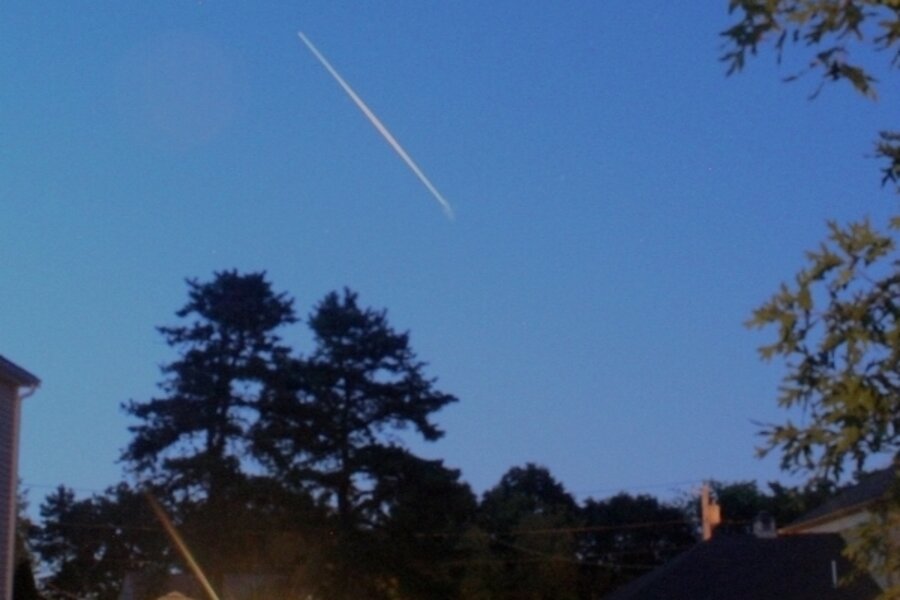Grab your camera and nab that space station (or satellite)
Loading...
With the space shuttle set to launch July 11 for a trip to the space station (you can read more about that here), it wasn't too big a stretch to get word that the space station would pass overhead for a full 6 minutes tonight and think: Man, I gotta try to get me a picture of that!
Others have snapped the ISS with more skill and agility. But, hey, it's like catching (and releasing) your first fish, turning the key in your first car, or your first ... you get the idea.
Step 1, of course, is knowing if the station is coming soon to a night sky near you. For that, Twitter is a big help. Check out Twisst, an alert service set up by a couple of Dutch science reporters, one of whom also develops web sites. Just sign up as a follower and you'll automatically get updates for your location. No muss. No fuss. The alert looks like this:
@pspotts ISS will cross the sky at your location at 9:12 pm! more details: http://twisst.nl/471
For those who haven't done the Twitter thing yet, the @pspotts is my Twitter ID. And the funny-looking web address corresponds to Twisst's website with my location information on it -- information the site gleans from the web.
An alternative is to visit NASA's Skywatch web page and use the tool in the left-hand column to select your country, state (for the US), and nearest city or town if yours isn't listed. Again, for my location the listing looked like this:
| ISS | Fri Jul 10/09:12 PM | 6 | 49 | 10 above WSW | 10 above NE |
Translation: The ISS will appear on Friday, July 10 at 9:12 p.m. The viewing opportunity will last for six minutes, and the station's high point will appear at 49 degrees above the horizon. It will first appear at 10 degrees above the horizon in the west southwest, and it will vanish about 10 degrees above the northeastern horizon.
Step 2, by all means check the weather. For my location tonight, the forecast was perfect: achingly clear skies. (Note the precise scientific term: achingly.)
Step 3, scout out a location where you'll get the best unobstructed view of as much of the predicted ISS path as possible. Set up a tripod to hold your camera (it's gonna be a long exposure) early, so you don't have to fiddle with it in the dark.
Step 4, go out about 10 to 15 minutes before the station is scheduled to appear to make you final adjustments, mount the camera, make sure it's aimed in the right direction (something you can adjust on the fly with a six-minute overflight), and swat at the mosquitoes looking for dinner.
'Scuze me sir, what shutter speed and f-stop are you using? You'll find some helpful guidance here. What? A 60-second (or much longer) exposure time? I don't have the recommended cable release for long exposures, and my camera only goes to 30 seconds before it hits "bulb." So I had to open up my lens a bit more than the web site recommends to compensate for the fact that I had to use a 30-second exposure, rather than a 1-minute exposure.
And no cable release? No problem. Just use your camera's self-timer -- the one that allows you to jump into the picture (but don't in this case). Be sure not to bump the tripod while the camera's shutter is open. Whistle a tune. Whittle a sailing ship. Go over to the fence, where your neighbors are having friends over for a cook-out, and point out the cool thing moving across the night sky. But don't bump the tripod.
If all goes well, you'll end up with a tidy streak across the sky in your image. The streak is even brighter when the space shuttle is docked to the station.
From there, you should be able to extend you night-time sky photography to include other satellites or the motion of stars across the sky. Play around with it. These days, when you no longer need to worry about "wasting" rolls of film, it's become a lot easier to dip your toes into this aspect of skywatching.





